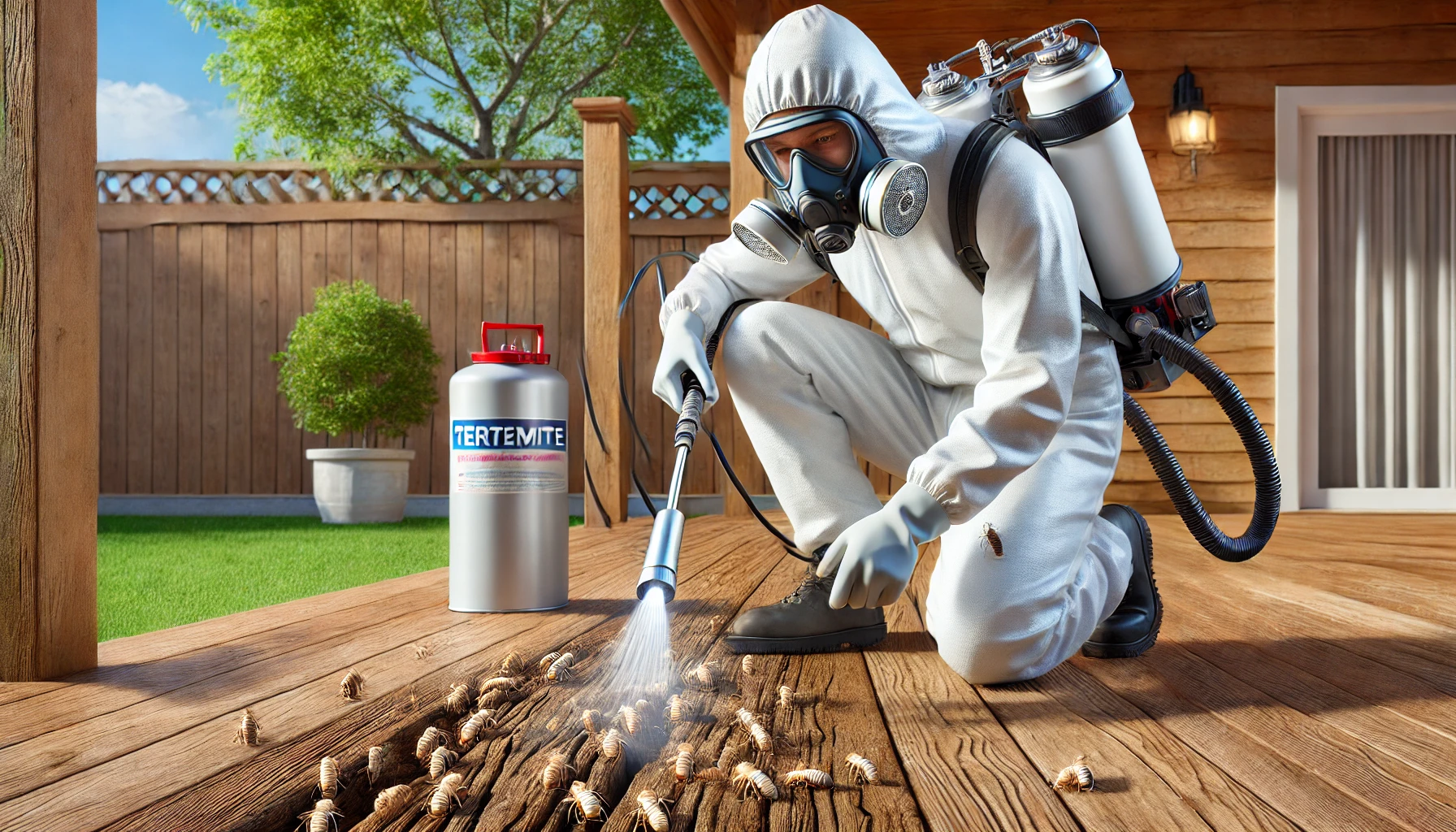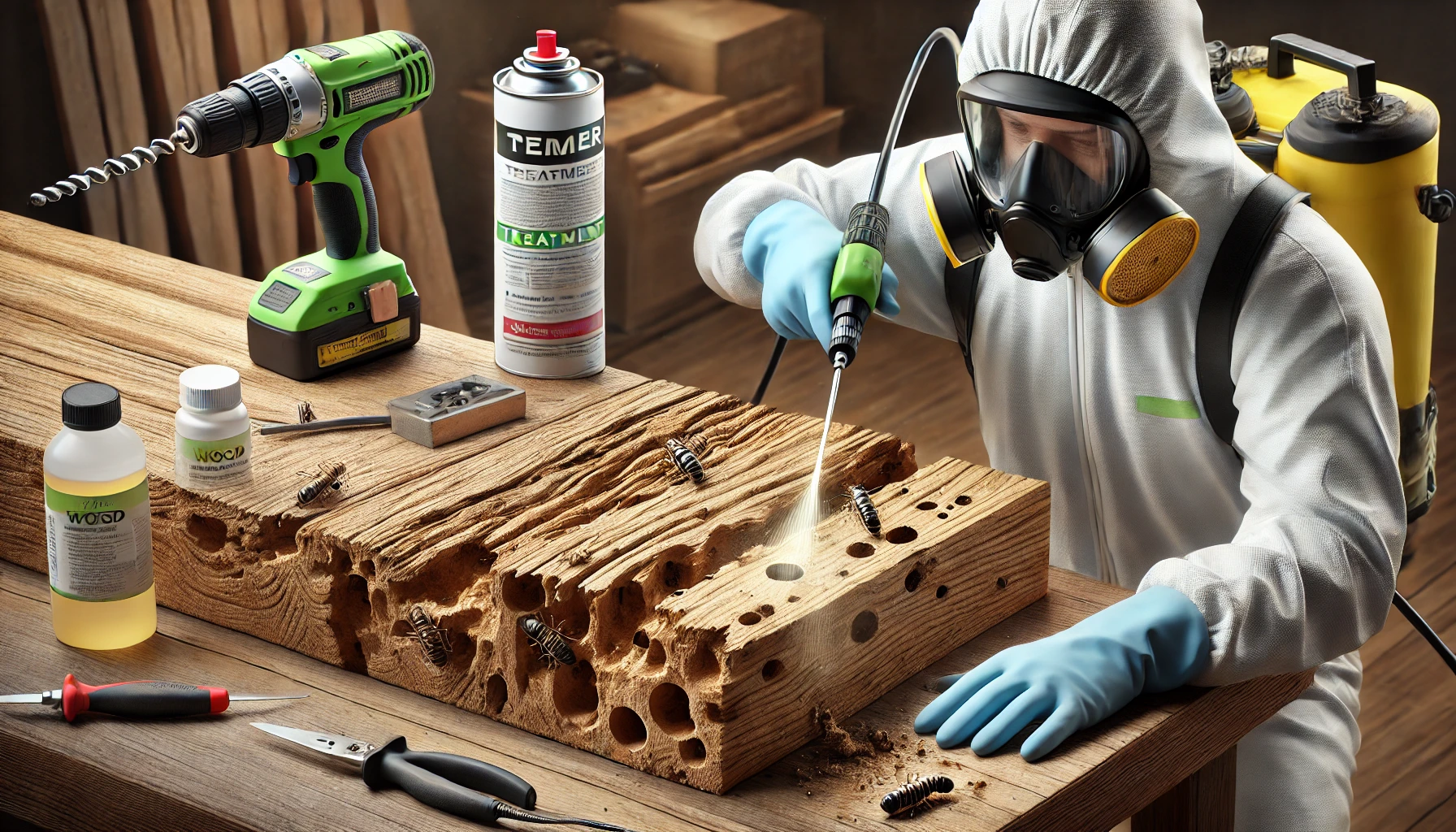Key Takeaways
-
The most effective termite treatment depends on termite species, infestation extent, and homeowner needs.
-
Liquid barriers and bait stations are best for subterranean termites, offering long-term protection.
-
Fumigation and heat treatments provide rapid results for drywood termites and severe infestations.
-
Professional termite control services offer lasting protection, proper identification, and expert application.
-
Preventive measures and regular inspections significantly reduce the risk and severity of termite infestations.
Understanding Your Termite Treatment Options
Selecting the right termite treatment depends on the termite species—primarily subterranean or drywood termites—the severity of the infestation, and your preferences. Below, we compare the most popular termite control methods:
1. Liquid Termiticide Treatments (Chemical Barriers)
Liquid termite treatments involve applying specialized chemicals around your home’s perimeter, creating an invisible protective barrier. These non-repellent chemicals let termites carry poison back to their colony, leading to colony eradication. Effectiveness: Highly effective against subterranean termites; protection lasts 5–10 years.| Pros | Cons |
|---|---|
|
|


Not getting a solution?
Get your free pest control estimate today!2. Termite Bait Stations
Bait stations like Sentricon® or Exterra® contain cellulose bait with a slow-acting insecticide. Termites consume bait and spread it within their colony, gradually eliminating it. Effectiveness: Highly effective for subterranean termites; provides long-term protection.| Pros | Cons |
|---|---|
|
|

3. Whole-House Fumigation
Fumigation involves tenting your home and applying a gas that eradicates nearly 100% of termites. Ideal for extensive infestations and drywood termites.| Pros | Cons |
|---|---|
|
|

4. Heat Treatment
Heat treatment raises wood temperatures (120–140°F), effectively killing drywood termites without chemicals.| Pros | Cons |
|---|---|
|
|

5. Wood Treatments (Borate Solutions)
Borate-based wood treatments directly protect wood from termites, particularly in new construction or preventive applications.| Pros | Cons |
|---|---|
|
|
DIY vs. Professional Termite Treatment: Which is Better?
DIY treatments might work for small, isolated infestations, but professional termite treatment services are highly recommended due to guaranteed results, expert application, and detailed inspections. Schedule a Professional Termite Inspection Today!Effective Termite Prevention Tips
- Reduce moisture by fixing plumbing leaks.
- Keep gutters clean to ensure proper drainage.
- Store firewood away from your home’s foundation.
- Conduct annual professional inspections.
- Seal cracks in foundations and utility entry points.
If you feel things have gone out of control, it is advised to contact pest control professionals. Our team can provide a customized approach to protect your home effectively. Visit our Species, Control, and DIY Guide sections for additional resources on termites and ways to tackle a termite infestation.





